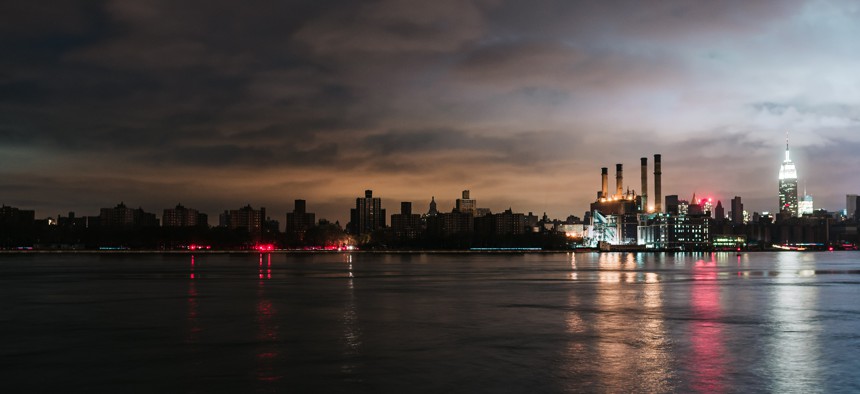DOE shares playbook for energy emergencies

Jonathan Percy / EyeEm / Getty Images

Connecting state and local government leaders
The Energy Emergency Response Playbook for States and Territories is designed to help state officials respond to threats to the energy infrastructure from cyberattacks, man-made damage and weather-related incidents like drought, flooding, storms, extreme heat or earthquakes.
To help state energy officials prepare for and respond to energy emergencies that can affect critical infrastructure, the Department of Energy has released the Energy Emergency Response Playbook for States and Territories.
The playbook features guidance on energy emergency response planning and includes a framework for evaluating energy emergencies, guidance and templates for emergency actions as well as planning, monitoring and response resources.
It is designed to help state officials respond to threats to the energy infrastructure from cyberattacks, man-made damage to power lines and weather-related incidents like drought, flooding, storms, extreme heat, earthquakes.
The playbook divides emergency response into three stages that are iteratively updated as events unfold: information gathering, consequence assessment and response.
Information collection or situational awareness calls for assembling timely, accurate and actionable information on threats and impacts to energy systems and services. To help state officials build this knowledgebase, the playbook links to a number of federal and industry reports and databases covering weather threats as well as estimated power outages due to storms, petroleum supplies, pipeline locations and power outages at gas stations.
Consequence assessments rely on quantitative and qualitative data characterizing baseline supplies, prices and dynamics gathered during the information collection stage. Officials are advised to then continually evaluate threat levels and the magnitude, geography and expected duration of impacts to wholesale energy markets, delivery systems and consumers
The playbook also helps officials rate threats to electricity, liquid fuels and natural gas using a tiered system based on the National Incident Management Systems Incident Complexity Guide and DOE’s response activation guidance. Tier 3 events are supply chain or energy service disruptions that can be largely addressed by industry with little to no need for support from the state or federal governments. Tier 2 events, such as significant disruptions to supply chains or services, often exceed local government resources, the playbook says, and industry often seeks government assistance to speed infrastructure repairs or mitigate impact. Tier 1 events are major disruptions that have extended or indefinite restoration timelines. They require massive government response at every level.
The response actions section outlines possible planning and response activities for various state and industry players – such as state energy offices, utility commissions, emergency management agencies, utility and grid operators – based on the type of event: power outage or liquid fuel or natural gas shortage and disruptions.
The playbook also includes a list of informational resources for monitoring energy supply, inventories and markets, as well as weather-related threats. To help officials assess consequences of energy disruptions, there is guidance on how to categorize and assess the consequence of an event to inform a proportional response. It also identifies response measures by the event type, actor, event consequence, and the time phase of the emergency event.
Several appendices provide information on situational awareness tools, supply chain and interdependence diagrams as well as considerations for remote areas and vulnerable populations.
The playbook was developed by DOE's Office of Cybersecurity, Energy Security, and Emergency Response and the National Association of State Energy Officials.





